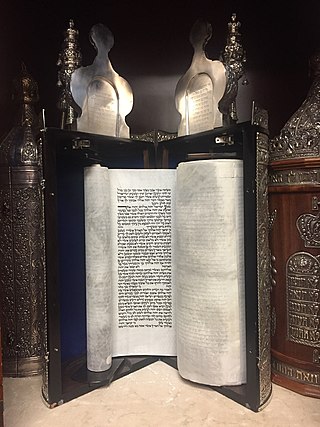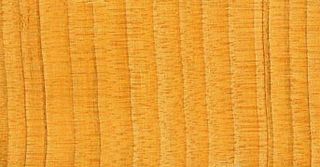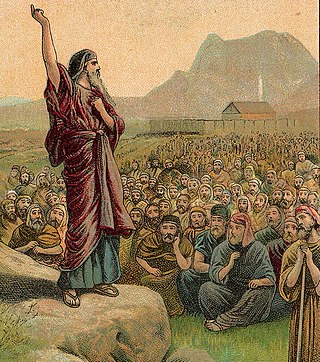Art
Original artwork by Baruj Salinas commissioned for the Torah Project book:
- TORAH (2014) by Baruj Salinas
- GENESIS: CREATION (2014) by Baruj Salinas
- LEVITICUS: THE LAW (2014) by Baruj Salinas
- NUMBERS: THE TRIBES (2014) by Baruj Salinas
The Torah Project is an annotated and illustrated limited edition volume containing the Five Books of Moses. The handcrafted book was created as part of the 2013 project, which was started by book publisher ACC Arte Scritta. It was released in Italy in 2017. Each copy includes a handwritten blessing by Pope Francis and has been presented to multiple world leaders during its launch.
At the end of 2013, Ricardo De La Fuente and Maria Cecilia Braschi, the founders of ACC Arte Scritta, came up with the idea, at the Guadalajara International Book Fair, to create an illustrated edition of the Torah called 'The Torah Project', which would contain creative, and inspirational artworks of Jewish culture. [1] Mexican Jewish art collector Dan Tartakovsky was the patron of the project, and he recruited the Cuban-American Jewish artist Baruj Salinas to illustrate the book. [2]
This book contains the Five Books of Moses, Genesis, Exodus, Leviticus, Numbers and Deuteronomy, in the original Hebrew text. It is a Chumash, a printed edition of the Torah.
It also contains commentaries from personalities in art and biblical studies, which have been translated into four languages — English, Spanish, Italian, and German. Each copy of The Torah Project also includes a handwritten blessing by Pope Francis, which says: “I want to bless all those who have worked in the production of this Torah, which is the word of God, that must unite us in love forever.” [3]
The cover of the Torah Project book represents the city of Jerusalem, and it is made out of wood and pearl. In between the chapters of the Torah, there are 27 lithograph paintings created by noted Jewish artist Baruj Salinas. [1]
The book was printed by Stamperia Santa Chiara in Urbino. [4] This traditional, family-owned business uses massive hand-operated printing presses. [5]
The carved wood book covers were hand crafted by Gentili of Fossombrone. Book binding was completed by Steri of Corciano. About 500 craftspeople participated in the book's production. [4]
Original artwork by Baruj Salinas commissioned for the Torah Project book:
The book has been published in an edition of 126 copies. They have been presented to museums and universities around the world. Other copies were sold to private collectors. [1]
On 23 February 2017, the first copy of The Torah Project book was presented to Pope Francis at the Vatican. Also present was Rabbi Abraham Skorka, from Buenos Aires, [6] ACC Arte Scritta, and scholars in biblical studies and art. One of the guests was Adolfo D. Roitman, the curator of the Shrine of the Book, which holds the Dead Sea Scrolls at the Israel Museum in Jerusalem. [1] In addition, many of the people who created the book were present, with their families. [3]
Skorka pointed out in his speech to the Pope and the papal audience that “This is intended as a small, yet very significant cry to eradicate the hatred and animosities that are so tragically perceived today”. [7] Pope Francis expressed his appreciation for the Torah as a “thoughtful gesture” and that it is “the Lord’s gift, his revelation, his word”. He indicated that the editor's note inside this edition of the Torah indicates the “dialogical approach” that the relations between Catholics and Jews is “a cultural vision of openness, mutual respect, and peace that accords with the spiritual message of the Torah.” He also recognised the efforts and expertise of the craftsmen and artisans, and acknowledged how they added more value to the Torah with colorful illustrations. [8] The Pope said that the gift of this edition of the Torah to the Vatican "is fully embedded" in "fraternal and institutional dialogue between Jews and Christians" that "is expressed not only through words but also in deeds." [9]
Pope Francis received the first copy of this edition of the Torah and it will be added to the Vatican Secret Archives. [1] The book was presented to the Pope by a group of Jewish and Christian children. [3]
A copy was presented to Israeli president Reuven Rivlin on 27 April 2017. [10] Copies were also presented to other prominent world leaders, including German Chancellor Angela Merkel as well as the monarchs of Spain and Sweden. [11]

Abraham Joshua Heschel was a Polish-American rabbi and one of the leading Jewish theologians and Jewish philosophers of the 20th century. Heschel, a professor of Jewish mysticism at the Jewish Theological Seminary of America, authored a number of widely read books on Jewish philosophy and was a leader in the civil rights movement.
Christianity began as a movement within Second Temple Judaism, but the two religions gradually diverged over the first few centuries of the Christian Era. Today, differences of opinion vary between denominations in both religions, but the most important distinction is Christian acceptance and Jewish non-acceptance of Jesus as the Messiah prophesized in the Hebrew Bible and Jewish tradition. Early Christianity distinguished itself by determining that observance of halakha was not necessary for non-Jewish converts to Christianity. Another major difference is the two religions' conceptions of God. The Christian God consists of three persons of one essence, with the doctrine of the incarnation of the Son in Jesus being of special importance. Judaism emphasizes the Oneness of God and rejects the Christian concept of God in human form. While Christianity recognizes the Hebrew Bible as part of its scriptural canon, Judaism does not recognize the Christian New Testament.
ArtScroll is an imprint of translations, books and commentaries from an Orthodox Jewish perspective published by Mesorah Publications, Ltd., a publishing company based in Rahway, New Jersey. Rabbi Nosson Scherman is the general editor.

The Hebrew word for 'symbol' is ot, which, in early Judaism, denoted not only a sign, but also a visible religious token of the relation between God and human.

A Sefer Torah or Torah scroll is a handwritten copy of the Torah, meaning the five books of Moses. The Torah scroll is mainly used in the ritual of Torah reading during Jewish prayers. At other times, it is stored in the holiest spot within a synagogue, the Torah ark, which is usually an ornate curtained-off cabinet or section of the synagogue built along the wall that most closely faces Jerusalem, the direction Jews face when praying.
Jewish English Bible translations are English translations of the Hebrew Bible (Tanakh) according to the Masoretic Text, in the traditional division and order of Torah, Nevi'im, and Ketuvim. Most Jewish translations appear in bilingual editions (Hebrew–English).
Nosson Scherman is an American Haredi rabbi best known as the general editor of ArtScroll/Mesorah Publications.

Parashat Vayikra, VaYikra, Va-yikra, Wayyiqra, or Wayyiqro is the 24th weekly Torah portion in the annual Jewish cycle of Torah reading and the first in the Book of Leviticus. The parashah lays out the laws of sacrifices. It constitutes Leviticus 1:1–5:26.

Tazria, Thazria, Thazri'a, Sazria, or Ki Tazria' is the 27th weekly Torah portion in the annual Jewish cycle of Torah reading and the fourth in the Book of Leviticus. The parashah deals with ritual impurity. It constitutes Leviticus 12:1–13:59. The parashah is made up of 3,667 Hebrew letters, 1,010 Hebrew words, 67 verses, and 128 lines in a Torah Scroll.

Metzora, Metzorah, M'tzora, Mezora, Metsora, M'tsora, Metsoro, Meṣora, or Maṣoro is the 28th weekly Torah portion in the annual Jewish cycle of Torah reading and the fifth in the Book of Leviticus. The parashah deals with ritual impurity. It addresses cleansing from skin disease, houses with an eruptive plague, male genital discharges, and menstruation. The parashah constitutes Leviticus 14:1–15:33. The parashah is made up of 4,697 Hebrew letters, 1,274 Hebrew words, 90 verses, and 159 lines in a Torah Scroll.

Behar, BeHar, Be-har, or B'har is the 32nd weekly Torah portion in the annual Jewish cycle of Torah reading and the ninth in the Book of Leviticus. The parashah tells the laws of the Sabbatical year and limits on debt servitude. The parashah constitutes Leviticus 25:1–26:2. It is the shortest of the weekly Torah portions in the Book of Leviticus. It is made up of 2,817 Hebrew letters, 737 Hebrew words, 57 verses, and 99 lines in a Torah Scroll.
Bechukotai, Bechukosai, or Bəḥuqothai (Biblical) is the 33rd weekly Torah portion in the annual Jewish cycle of Torah reading and the 10th and last in the Book of Leviticus. It constitutes Leviticus 26:3–27:34. The parashah addresses blessings for obeying the law, curses for disobeying it, and vows. The parashah is made up of 3,992 Hebrew letters, 1,013 Hebrew words, 78 verses, and 131 lines in a Torah Scroll.

Korach or Korah is the 38th weekly Torah portion in the annual Jewish cycle of Torah reading and the fifth in the Book of Numbers. It tells of Korah's failed attempt to overthrow Moses.

Va'etchanan is the 45th weekly Torah portion in the annual Jewish cycle of Torah reading and the second in the Book of Deuteronomy. It comprises Deuteronomy 3:23–7:11. The parashah tells how Moses asked to see the Land of Israel, made arguments to obey the law, recounted setting up the Cities of Refuge, recited the Ten Commandments and the Shema, and gave instructions for the Israelites' conquest of the Land.

Ki Teitzei, Ki Tetzei, Ki Tetse, Ki Thetze, Ki Tese, Ki Tetzey, or Ki Seitzei is the 49th weekly Torah portion in the annual Jewish cycle of Torah reading and the sixth in the Book of Deuteronomy. It comprises Deuteronomy 21:10–25:19. The parashah sets out a series of miscellaneous laws, mostly governing civil and domestic life, including ordinances regarding a beautiful captive of war, inheritance among the sons of two wives, a wayward son, the corpse of an executed person, found property, coming upon another in distress, rooftop safety, prohibited mixtures, sexual offenses, membership in the congregation, camp hygiene, runaway slaves, prostitution, usury, vows, gleaning, kidnapping, repossession, prompt payment of wages, vicarious liability, flogging, treatment of domestic animals, levirate marriage, weights and measures, and wiping out the memory of Amalek.
Jewish commentaries on the Bible are biblical commentaries of the Hebrew Bible from a Jewish perspective. Translations into Aramaic and English, and some universally accepted Jewish commentaries with notes on their method of approach and also some modern translations into English with notes are listed.

Sifrei Kodesh, commonly referred to as sefarim, or in its singular form, sefer, are books of Jewish religious literature and are viewed by religious Jews as sacred. These are generally works of Torah literature, i.e. Tanakh and all works that expound on it, including the Mishnah, Midrash, Talmud, and all works of halakha, Musar, Hasidism, Kabbalah, or machshavah. Historically, sifrei kodesh were generally written in Hebrew with some in Judeo-Aramaic or Arabic, although in recent years, thousands of titles in other languages, most notably English, were published. An alternative spelling for 'sefarim' is seforim.

Abraham Skorka is an Argentine biophysicist, rabbi and book author. Abraham Skorka is rector emeritus of the Seminario Rabínico Latinoamericano in Buenos Aires, the rabbi of the Jewish community Benei Tikva, professor of biblical and rabbinic literature at the Seminario Rabínico Latinoamericano and honorary professor of Hebrew Law at the Universidad del Salvador, Buenos Aires.

Baruj Salinas is a Cuban-American contemporary visual artist and architect. He is recognized as a central figure in the establishment of the modern Latin American art market in South Florida.

The Pope Francis bibliography contains a list of works by Pope Francis.
The press he is using in his demonstration is particularly small compared to the 17,000-pound presses in his spacious studio outside the walls of this city. These hand-operated presses are old enough to be in a museum but they still run well and Tiboni puts them to good use.